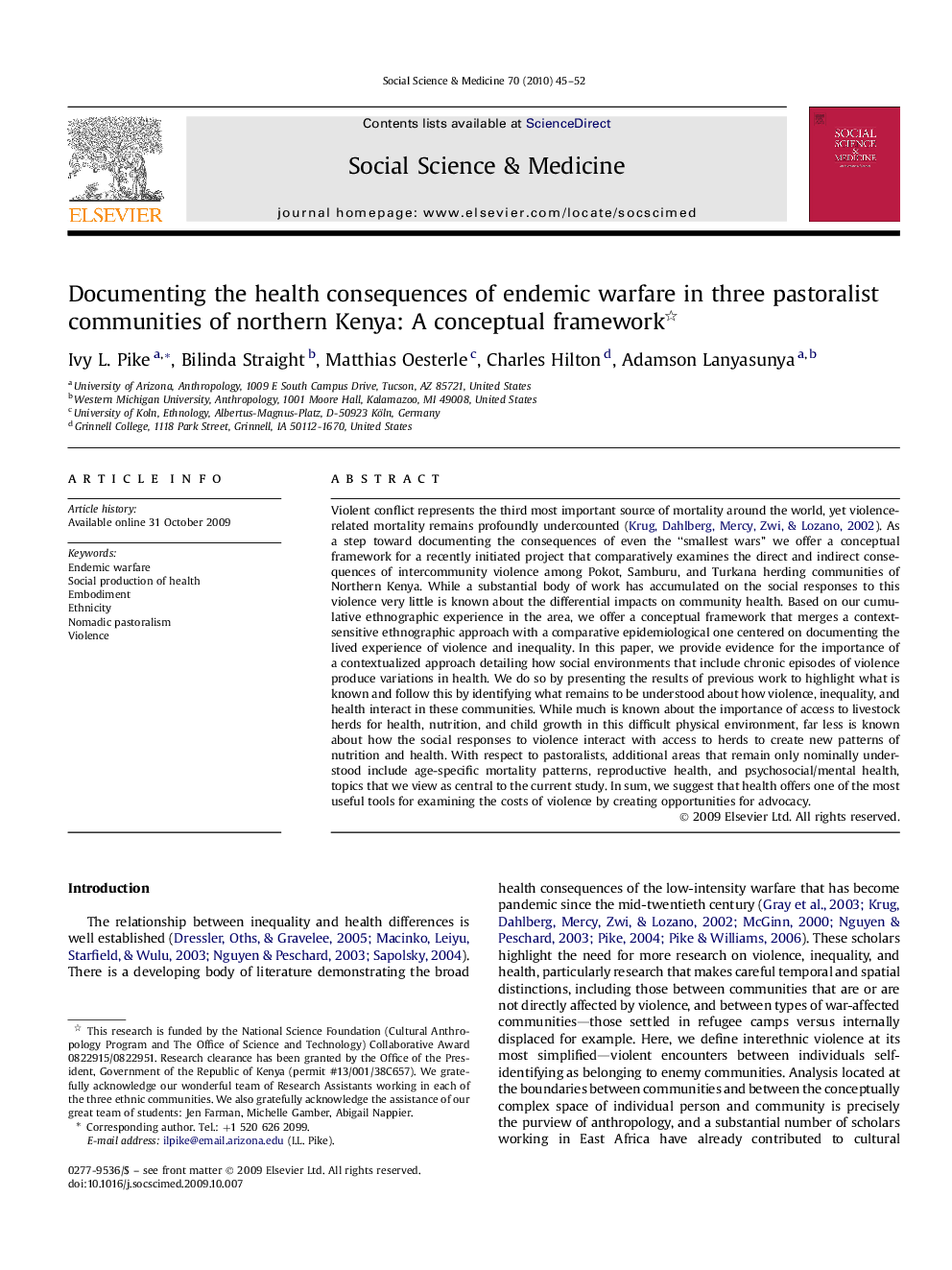| Article ID | Journal | Published Year | Pages | File Type |
|---|---|---|---|---|
| 953247 | Social Science & Medicine | 2010 | 8 Pages |
Violent conflict represents the third most important source of mortality around the world, yet violence-related mortality remains profoundly undercounted (Krug, Dahlberg, Mercy, Zwi, & Lozano, 2002). As a step toward documenting the consequences of even the “smallest wars” we offer a conceptual framework for a recently initiated project that comparatively examines the direct and indirect consequences of intercommunity violence among Pokot, Samburu, and Turkana herding communities of Northern Kenya. While a substantial body of work has accumulated on the social responses to this violence very little is known about the differential impacts on community health. Based on our cumulative ethnographic experience in the area, we offer a conceptual framework that merges a context-sensitive ethnographic approach with a comparative epidemiological one centered on documenting the lived experience of violence and inequality. In this paper, we provide evidence for the importance of a contextualized approach detailing how social environments that include chronic episodes of violence produce variations in health. We do so by presenting the results of previous work to highlight what is known and follow this by identifying what remains to be understood about how violence, inequality, and health interact in these communities. While much is known about the importance of access to livestock herds for health, nutrition, and child growth in this difficult physical environment, far less is known about how the social responses to violence interact with access to herds to create new patterns of nutrition and health. With respect to pastoralists, additional areas that remain only nominally understood include age-specific mortality patterns, reproductive health, and psychosocial/mental health, topics that we view as central to the current study. In sum, we suggest that health offers one of the most useful tools for examining the costs of violence by creating opportunities for advocacy.
